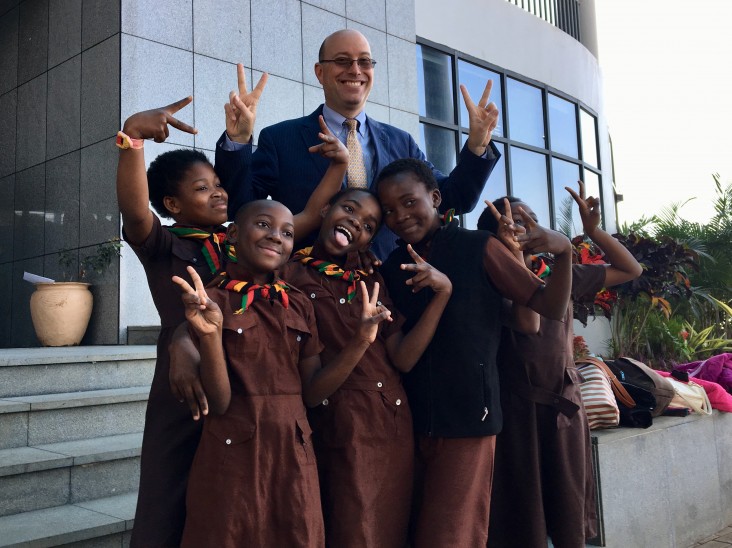Speeches Shim

On Tuesday, August 14th, Malawi’s Minister of Labour, Youth, Sports, and Manpower Development Francis Kasaila was joined by Chargé d’affaires Andrew Herrup and Malawi’s Minister of Health and Population Atupele Muluzi to officially launch Malawi’s National Strategy of Adolescent Girls and Young Women (AGYW). Over the past 18 months, Ambassador Virginia Palmer, USAID, and PEPFAR have been deeply engaged with the Government of Malawi (GOM), UNICEF, donors, and public/private stakeholders to draft a strategy that will bring clear structure and coordination mechanisms to Malawi’s many youth (particularly AGYW) initiatives. In his remarks, Chargé d’affaires Herrup stated: “We believe that a future of health, education, and economic prosperity is stolen from too many adolescent girls and young women as a result of limited space in secondary school, pressures to meet their own needs for food and shelter, sexual violence, and childbearing when they are still children themselves. With the launch of the AGYW strategy, we are all saying that this is unacceptable, and we are all committing to work together to definitively change this.” USAID will now help the GOM operationalize the Strategy by supporting district coordination, and promoting collaboration across ministries and other GOM departments and agencies.
The Government of Malawi is committed to cross-sectoral coordination and collaboration, especially across the four core Ministries (“line ministries”) directing this strategy, with overarching support from the Ministry of Finance Economic Planning and Development (MoF-EP&D) and Ministry of Local Government. The four core ministries include the following:
- Ministry of Education Science and Technology (MoEST)
- Ministry of Health and Population (MoHP)
- Ministry of Gender, Children Disability and Social Welfare (MoGCDSW)
- Ministry of Labour Youth Sports and Manpower Development (MoLYSMD).
Each ministry has articulated the importance of a decentralized and inclusive multisectoral approach, and all four collectively share a common analysis of the importance of taking a holistic approach to improving adolescents’ outcomes in education, health and protection. They have collectively identified that social and cultural gender norms and gender inequality are a significant barrier faced by girls in accessing education, healthcare, protection and support. They have further identified the following groups of vulnerable adolescent youth as particularly affected by discrimination or marginalized from mainstream services: adolescents living with HIV (ALHIV), adolescents with disabilities, and adolescent mothers and orphans.
Given this vision and coordination, the National Strategy for AGYW is expected to strengthen multi- sectoral responses and streamline referrals and linkages across service delivery platforms to improve their health, well-being and economic potential. Comprehensive interventions that empower AGYW and address cross-sectoral barriers faced by AGYW will maximize investments to improve health, education, gender equality, and economic empowerment outcomes. To achieve these results, government, civil society, development partners, and other stakeholders are expected to coordinate their efforts to ensure cohesive planning, targeting the most vulnerable girls in the most deprived geographic areas.

Comment
Make a general inquiry or suggest an improvement.